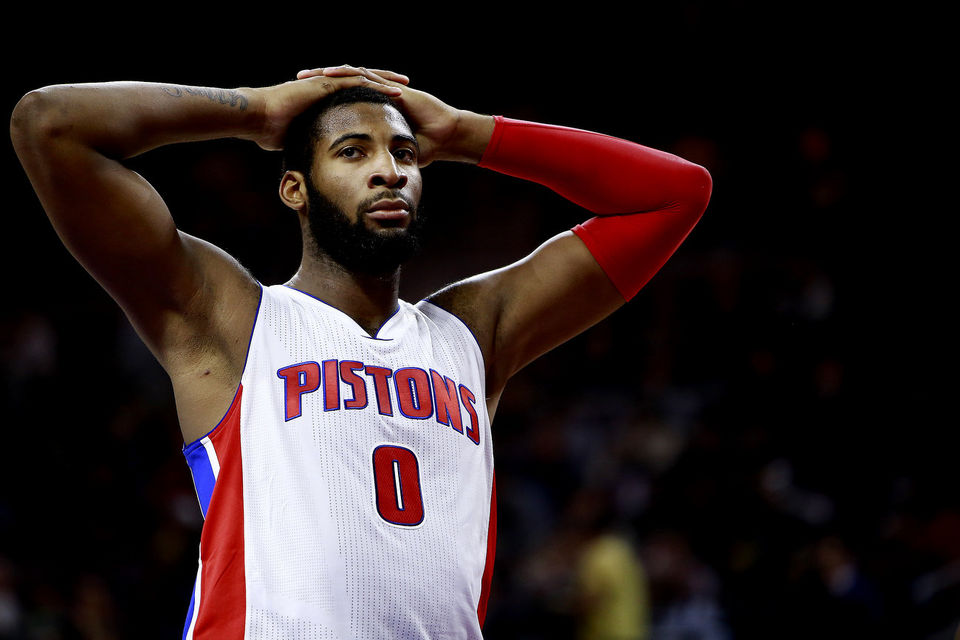In all likelihood, robots will never buy iPhones. This may soon become a problem. Our economic system, Marx observed, is based on a paradox: Although capitalism seeks to make zombies of us by commodifying every last one of our desires, it would self-destruct were it to succeed. The futility is built into the function.
As Yannis Varoufakis puts it,
a society of dehumanized simulacra, of automata, would resemble a mechanical watch full of cogs and springs, each with its own unique function, together producing a ‘good’: time keeping. Yet if that society contained nothing but other automata, time keeping would not be a ‘good’. It would be an ‘output’ for sure but why a ‘good’? Without real humans to experience the clock’s function, there can be no such thing as ‘good’ or ‘bad’. A ‘society’ of automata would, like the mechanical watch or some integrated circuit, be replete with functioning parts, demonstrating function but nothing that can be usefully described as ‘good’ or ‘evil’, indeed of ‘value’.
Our labor is like other commodities in that it can be paid for, but unlike other commodities in that we will it to be done: It contains an element of our freedom. We find commodities valuable only insofar as we mistake them for what’s invaluable about ourselves.
Henry James makes an analogous point when he considers Flaubert’s emphasis on style. “Style,” James writes, “. . . never totally beguiles; since even when we are so queerly constituted as to be ninety-nine parts literary we are still a hundredth part something else. This hundredth part may . . . make us imperfect as readers, and yet without it should we want or get the book at all?”
Would we read any novel if, behind the curtain of its style, there were not some ethical component lurking in the wings? In a symposium on Nabokov, James Wood commented that for all the Russian-American conjurer’s distaste for didacticism and manifestoes, “his writing may be seen as a manifesto for itself, in that it is so often explicitly reminding us of the importance of the kind of noticing his writing does so beautifully. This, too, can be irritating, and verges on the didactic at times.”
Would anyone watch basketball if it had no ethical component — i.e., if it were without mistakes, without some intimation of the fact that the players are as fragile as we are? Could our excitement for the game withstand a lack of blunderers, choke-artists, and scapegoats? Would there be such a thing as a game if no one ever missed?
The Detroit Pistons’ Andre Drummond is a career 38% free throw shooter, the worst of all time. While up till now the poor marks of big men at the foul stripe have been seen as humorous foibles, made up for by their dominance in the paint, coaching savvy has recently turned Drummond’s frailty into a genuine problem — for Drummond and for the league as a whole. The great coach Don Nelson pioneered the strategy of intentionally fouling poor free throw shooters in 1997, calling on benchwarmer Bubba Wells, in a December 27 game against the Bulls, to hack away at Dennis Rodman and thereby take the ball out of Michael Jordan’s hands. Later the technique became known as Hack-a-Shaq, when it was used late in games against the brick-prone O’Neal. But only recently has it become a league-wide epidemic, its spores spreading early and late in games, regular or post-season, everywhere from the beaches of Los Angeles to Massachusetts Bay.
NBA Commissioner Adam Silver has had enough. “At the end of the day,” Silver has said, “we are an entertainment property, and it’s clear that when you’re in the arena, that fans are looking at me, shrugging their shoulders with that look saying, ‘Aren’t you going to do something about this?’” On July 12th, he instituted a rule change to discourage the practice.
Many of the arguments against Hack-a-Dummond are indeed sensible and true. The practice does slow down the game. It does incline the casual viewer toward boredom. It does, as Silver has noted elsewhere, subvert the original intent of the free throw — which, in its Platonic form, would be an easy means for the fouled player to score, granted to him as recompense for enduring the extralegal contact that inhibited his legal play.
And yet I find myself filled with a tender hope that the spirit of the Hack-a strategy will live on — and not, as Charles Barkley, and other prominent pro-Hackers have argued, because players ought to learn to make their free throws. On the contrary, we may all need to learn how better to miss them.
Pistons coach Stan van Gundy has noted that in the solitude of the team’s practice facility, Drummond makes about 65% of his free throws — 30% better than during competition. “It’s just hard,” the coach went on to explain, “for whatever reason, to translate from the practice floor to the game. . . . Look, you’re standing there by yourself, with the game stopped, and everybody’s watching. Let’s say a guy misses a jump shot. The play goes to the other end, and everyone’s focused on what’s happening there. But Andre’s standing there at the free throw line, all everybody’s talking about who’s watching the game is his free throw shooting. It’s hard. It’s really hard.”
What is the difference then between free throws in practice and the real thing? After all, an NBA game, too, is only a simulation of a conflict: Nothing real is at stake. Not even, as Drummond’s recent $130 million max contract proves, the amount of money he’ll be paid to play. What then is at risk in the presence of a crowd that remains safe when one is alone?
In her New York Times Magazine article “Is Staying In the New Going Out?”, Molly Young compares millennials’ wariness of engaging in (non-cyber) social activity with a wealth manager’s reluctance to invest capital. “Why risk a restaurant,” Young asks, “when you can order Seamless or sauté premade gnocchi from Blue Apron? Why go to a bar when you can swipe right? Why go to a reading when you can download a podcast? Why pay $15 to see a boneheaded Marvel rehash in theaters when the world of premium streaming content is at your fingertips? . . . Let’s strip away the censure, for a moment, by analogizing the trend to personal wealth management. If we define ‘capital’ in this metaphor as a mixture of our time and emotional stasis, then staying in is the ultimate conservative investment. It’s like pouring your money into a savings account: You’ll grow marginally; you’ll stay safe. . . . As with Keynes’ paradox of thrift, the indisputable smart play for the individual is to spend nights and weekends snuggled under the duvet with an iPhone.”
But in what sense then are the non-IRL options “safe”? In the case of food, we are kept safe from finding out that the dinner we’d wanted doesn’t really satisfy us; of sex, from dealing face to face with the people we desire; of the reading, from the boredom of listening to the words we set out to hear; of movies, from the humiliation of realizing that our own thralldom to streaming services is no different from the thralldom of those who come by way of Iron Man.
In that case, could it be that the real threat of going out into the city to find happiness through its cultural offerings is that one will realize just how feeble those offerings really are, and how futile the ambition? In a bar, we have to smile and pretend that we like searching for sexual partners, whereas on Tinder we can give loose to our true listlessness with the limp flick of a thumb. Maybe we’ve been bored all along, but only risk finding out in the presence of others — just as Drummond’s aversion to shooting a basketball through a hoop only manifests when 40,000 people surround him, idiotically certain that his free throws really matter.
In the end Young does come down, if tentatively, in favor of an IRL way of being. “But what’s the point of living in a city?” she asks, “if you treat it like a suburb?” And yet to a large degree the centers of our cities already are suburbs: glassy, tapas-filled playgrounds at which hedge fund managers and programmers are serviced in between work hours. Those who stymy the modern city-dweller’s IRL pleasure are not only fellow revelers but also those menial workers in the shadows who produce the conditions for leisure. And in their case, Keynes’ paradox of thrift doesn’t hold: For the slave laborer who assembles the iPhone, for instance, there are still choices, but the only smart play to avert risk is suicide.
In her memoir Negroland, Margo Jefferson writes about a period of her life consumed by the desire to die — a wish which is simultaneously fueled and thwarted by the knowledge that even the will toward self-annihilation has been proscribed by the circumstances into which she’d been born. Jefferson writes:
[O]ne white female privilege had always been withheld from the girls of Negroland. Aside from the privilege of actually being white, they had been denied the privilege of freely yielding to depression, of flaunting neurosis as a mark of social and psychic complexity. A privilege that was glorified in their literature of white female suffering and resistance. A privilege Good Negro Girls had been denied by our history of duty, obligation, and discipline. Because our people had endured horrors and prevailed, even triumphed, their descendents should be too strong and too proud for such behavior. . . . I craved the right to turn my face to the wall, to create death commensurate with bourgeois achievement, political awareness, and aesthetically compelling feminine despair.
Freud notes in Beyond the Pleasure Principle that, generally speaking, if you put a neurotic person in a genuinely terrible situation, that person’s neurosis will tend to improve. It’s tempting to think that there’s a base amount of suffering we all tend toward, and which the well-fed and able-bodied among us can only experience psychically. But can these two economies of pain — the one external, of being thwarted and hated; the other internal, of guilt, neurosis, and self-hatred — ever really be compared? And if one type of pain is self-willed, to what extent does it remain “pain”? To what degree does self-sabotage remain sabotage? What is the difference between intentionally failing to consummate a desire and succeeding in avoiding it?
For all the many hypotheses about Drummond’s supposed defect, it seems odd to me that no one has posited that he is missing so many free throws simply because he wants to. The only problem with this hypothesis is that it would give him volition and complexity. It might dispel the illusion that athletes are machines optimized for winning. In the 30 for 30 documentary on Wilt Chamberlain, one commentator offers just such an explanation for Wilt’s famous free throw difficulties, guessing that the great player missed so many free throws simply “to prove to everyone that he was only human.” This would be a textbook definition of neurosis: the unconscious need to prevent oneself from doing too well.
Not to be lost in an understanding of the poor free-throw shooter as neurotic is the fact that the entire structure of the NBA is insane. Grown men are paid hundreds of millions of dollars to put a ball through a hoop, and expected to treat the competition with a sociopathic level of seriousness. Yet in sports as in life resistance — against the self, as in the case of Drummond; or against those who benefit from the smoothly functioning system, as in the case of The Malice at the Palace — sometimes breaks through.
Sports, like capitalism, may be little more than the repetition compulsion on a grand scale: We continue on symbolically repeating our sociopathic competitiveness in order to understand why we have been enthralled by it in the first place. And yet there is always the chance for a rupture. As Flannery O’Connor writes to her despairing confidante Betty Hester, alighting on one of the Gospels’ points of congruence with psychoanalysis: “The meaning of redemption is precisely that we do not have to be our history, and nothing is plainer to me than that you are not your history.”
We should then be thankful then for players like Drummond, who sabotage the rules of play so that we might see them more clearly, and discover for what it is that the game and our lives are really a metaphor.
This post may contain affiliate links.








